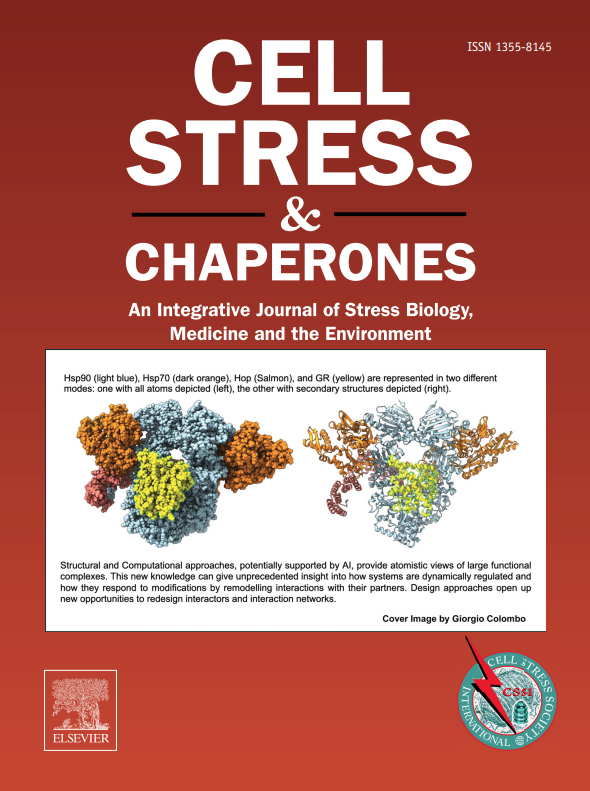Lycium barbarum polysaccharide alleviates H2O2-induced premature senescence by downregulating miRNA-34a-5p in ARPE-19 cells
IF 3.2
3区 生物学
Q3 CELL BIOLOGY
引用次数: 0
Abstract
The premature senescence of retinal pigment epithelium (RPE) plays a significant role in the development of age-related macular degeneration. This study aimed to investigate the potential protective effect of Lycium barbarum polysaccharide (LBP) against H2O2-induced premature senescence and to elucidate the underlying mechanisms. The ARPE-19 cell line was subjected to H2O2 exposure to create a model of premature senescence. The modulation of microRNA-34a-5p expression was accomplished using antagomir and agomir, as assessed by quantitative real-time polymerase chain reaction. The senescence model was successfully established by treating cells with 200 μM H2O2 for 2 hours daily over a span of three consecutive days. This oxidative stress resulted in a notable increase in the proportion of senescence-associated beta-galactosidase-positive cells, reaching 33.5%, without significant alterations in cell viability or apoptosis. In the ARPE-19 cells undergoing premature senescence, there was a marked increase in reactive oxygen species (ROS) production and malondialdehyde levels, coupled with a significant decrease in the activity of total superoxide dismutase, glutathione peroxidase, and catalase. Additionally, microRNA-34a-5p was found to be overexpressed in these cells. Treatment with LBP alleviated H2O2-induced premature senescence, diminished the overexpression of microRNA-34a-5p, and suppressed ROS production. Moreover, the incubation with ago-34a reversed the protective effect of LBP in ARPE-19 cells. In conclusion, the overexpression of microRNA-34a-5p contributes to the H2O2-induced premature senescence of ARPE-19 cells. LBP appears to mitigate this premature senescence, at least in part, by downregulating microRNA-34a-5p expression and reducing oxidative stress.
枸杞多糖通过下调ARPE-19细胞中的miRNA-34a-5p,缓解H2O2诱导的早衰。
背景:视网膜色素上皮(RPE)的过早衰老在老年性黄斑变性的发生中起着重要作用。本研究旨在探讨枸杞多糖(LBP)对H2O2诱导的过早衰老的保护作用,并阐明其潜在机制:方法:将ARPE-19细胞系置于H2O2暴露下,建立早衰模型。方法:ARPE-19 细胞系暴露于 H2O2,以建立早衰模型。模型建立后,细胞在枸杞多糖存在或不存在的情况下维持。使用 antagomir 和 agomir 对 microRNA(miRNA)-34a-5p 的表达进行调节,并通过定量实时聚合酶链反应进行评估:连续三天每天用 200μM H2O2 处理细胞 2 小时,成功建立了衰老模型。这种氧化应激导致衰老相关的 beta-半乳糖苷酶阳性细胞比例明显增加,达到 33.5%,但细胞活力和凋亡没有明显变化。在过早衰老的 ARPE-19 细胞中,活性氧(ROS)生成和丙二醛(MDA)水平明显增加,同时总超氧化物歧化酶(SOD)、谷胱甘肽过氧化物酶(GSH px)和过氧化氢酶(CAT)的活性显著下降。此外,还发现 miRNA-34a-5p 在这些细胞中过度表达。用枸杞多糖处理可缓解 H2O2 诱导的早衰,减少 miRNA-34a-5p 的过表达,并抑制 ROS 的产生。此外,与 ago-34a 一起孵育可逆转枸杞多糖对 ARPE-19 细胞的保护作用:结论:miRNA-34a-5p的过表达是H2O2诱导ARPE-19细胞早衰的原因之一。枸杞多糖似乎可以通过下调 miRNA-34a-5p 的表达和减少氧化应激来缓解这种过早衰老,至少部分是这样。
本文章由计算机程序翻译,如有差异,请以英文原文为准。
求助全文
约1分钟内获得全文
求助全文
来源期刊

Cell Stress & Chaperones
生物-细胞生物学
CiteScore
7.60
自引率
2.60%
发文量
59
审稿时长
6-12 weeks
期刊介绍:
Cell Stress and Chaperones is an integrative journal that bridges the gap between laboratory model systems and natural populations. The journal captures the eclectic spirit of the cellular stress response field in a single, concentrated source of current information. Major emphasis is placed on the effects of climate change on individual species in the natural environment and their capacity to adapt. This emphasis expands our focus on stress biology and medicine by linking climate change effects to research on cellular stress responses of animals, micro-organisms and plants.
 求助内容:
求助内容: 应助结果提醒方式:
应助结果提醒方式:


